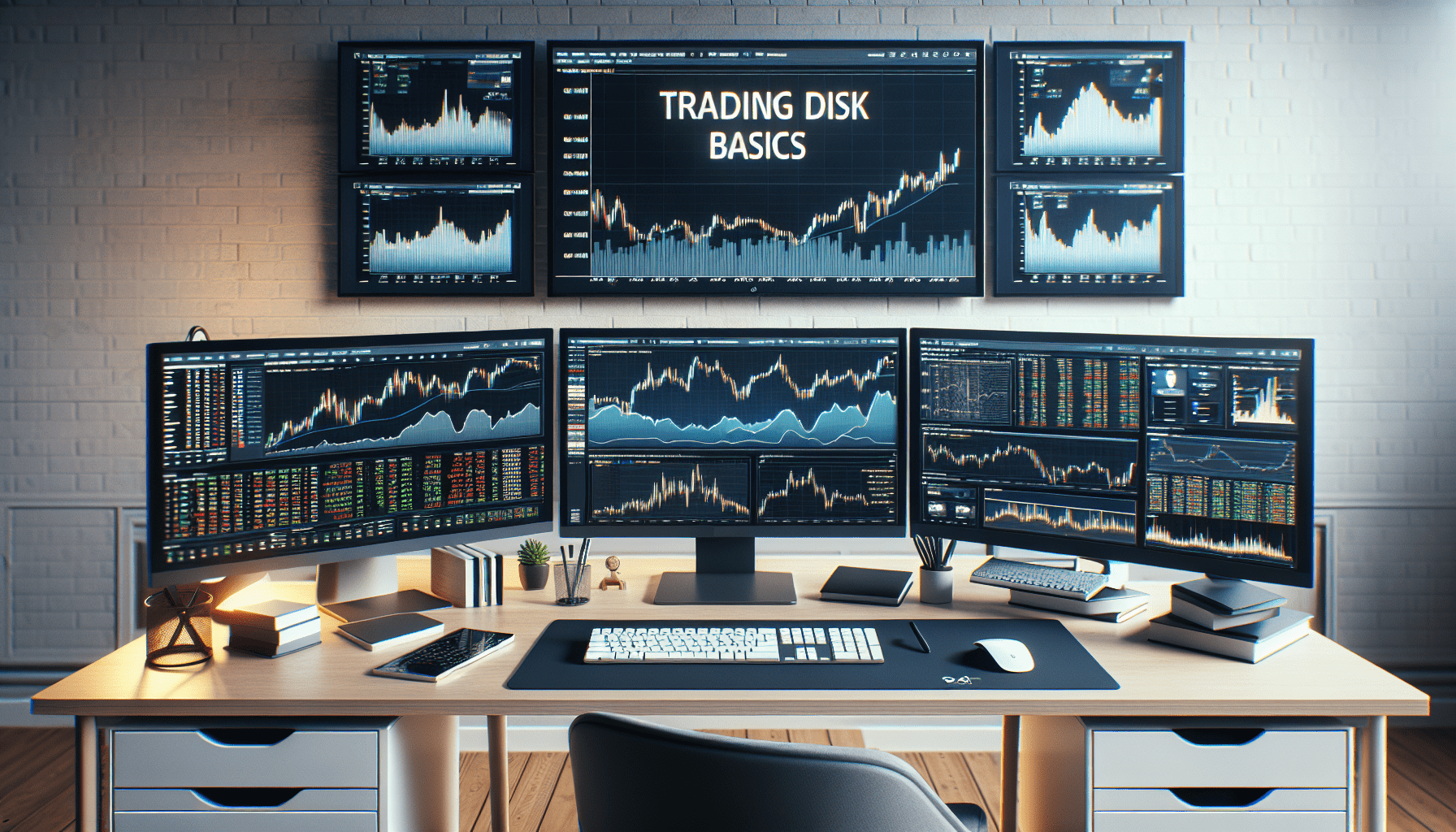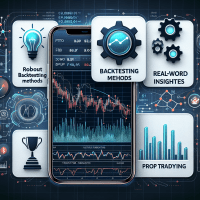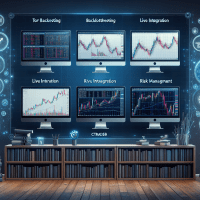Expert Guide: Prop Trading Desktop Platform Tactics
For prop trading professionals, mastering the desktop platform environment requires not only an understanding of market trends but also in-depth knowledge of automated backtesting, risk management, and cutting-edge trading tools. In this guide, we explore actionable strategies, examine renowned software, and detail practical case studies to equip you with expert insights.
Understanding the Prop Trading Desktop Platform
Proprietary trading today is driven by rapid technology integration and continuous improvements in backtesting methodologies. A prop trading desktop platform not only facilitates real-time trading but also integrates tools for advanced backtesting, optimization, and compliance with industry regulations such as MiFID II and ESMA.
Key Features and Benefits
- Advanced Backtesting: Use tools that support automated parameter optimization and scenario analysis.
- Data Integration: Harness both historical and real-time data feeds to simulate real market conditions.
- Risk Management: Monitor advanced risk metrics like Sharpe ratios, drawdowns, and profit factors.
- Compliance Tools: Ensure all trading activities align with regulatory requirements.
Modern trading platforms such as TradingView, MetaTrader 5, and NinjaTrader have set high standards by offering robust integration, rich historical data and cutting-edge automation capabilities ideal for both prop firms and experienced retail traders.

Figure 1: Example backtesting report showcasing key performance metrics on a prop trading desktop platform.
Comparative Analysis of Top Backtesting Tools
There are several widely recognized tools that prop trading professionals rely on to perform automated backtesting. Below is a detailed comparison table highlighting the key features:
| Tool | Backtesting Features | Data Quality & Coverage | Integration | Pricing & Use Case |
|---|---|---|---|---|
| TradingView | Vectorized backtesting, chart-based strategy testing | Extensive historical data across many asset classes | API access and broker integrations | Freemium model; ideal for individual traders |
| MetaTrader 5 | Event-driven backtesting, commission/slippage simulation | High-quality forex and CFD data | Broker integration, automated trading | Cost-effective for both retail and prop firms |
| NinjaTrader | Advanced optimization, real-time simulation | Rich historical tick data | Robust API and third-party plugins | Subscription-based; scalable solutions for teams |
| QuantConnect | Automated parameter optimization, scenario analysis | Diverse asset classes with deep history | Multi-language support with API integrations | Flexible pricing; suited for algorithmic quant research |
Advanced Backtesting Concepts and Best Practices
Backtesting is central to forging robust trading strategies but comes with pitfalls. Identifying and mitigating issues such as survivor bias, look-ahead bias, and data snooping is crucial. Here, we outline best practices:
Mitigating Common Pitfalls
- Overfitting: Split your data into training and out-of-sample datasets to validate strategy robustness.
- Survivorship Bias: Use complete historical data, including delisted securities, to avoid skewed results.
- Look-Ahead Bias: Ensure your data and signals strictly adhere to the timeline of events.
Walk-forward Optimization vs. Traditional Backtesting
While traditional backtesting evaluates strategies on a fixed dataset, walk-forward optimization continuously adjusts parameters with each rolling period, providing better adaptability in real-time scenarios. This method is particularly beneficial for prop trading firms requiring dynamic strategy adjustments.
Integrating Forward Testing for Real-World Validation
Before live deployment, integrating backtesting outcomes with forward (paper) trading is essential. Monitor key performance indicators like the Sharpe ratio, maximum drawdown, and profit factor during this phase. A sample Python-based backtesting snippet using Backtrader is shown below:
import backtrader as bt
class TestStrategy(bt.Strategy):
def __init__(self):
self.sma = bt.indicators.SimpleMovingAverage(self.data.close, period=15)
def next(self):
if self.data.close[0] > self.sma[0]:
self.buy()
elif self.data.close[0] < self.sma[0]:
self.sell()
cerebro = bt.Cerebro()
cerebro.addstrategy(TestStrategy)
# Create data feed and add to Cerebro here
cerebro.run()
cerebro.plot()

Figure 2: Advanced interface view of a prop trading platform used by professional traders for automated backtesting.
Real-World Case Studies and Application Insights
Many prop trading firms leverage these desktop platforms to iterate rapidly on strategy development. Consider the following anonymized case study:
Case Study: Enhancing Strategy Performance with Walk-forward Analysis
A mid-sized prop firm observed stagnant performance and high drawdown levels in their trading models. By integrating walk-forward optimization with a tool like QuantConnect, they restructured their backtesting process. Key steps included:
- Utilizing out-of-sample testing to validate parameter choices.
- Conducting stress tests under volatile market conditions.
- Iterating the trading models with real-time data feed integrations.
Results: The firm recorded a 20% improvement in its Sharpe ratio and reduced maximum drawdown by 15%, proving the effectiveness of dynamic model adjustments. For more on effective risk management, see our Prop Trading Risk Management article.
Expert Guidance and Next Steps in Prop Trading
Pro Tip: Always incorporate a robust risk management checklist within your workflow. This not only alerts you to anomalous performance but also ensures compliance with standards prescribed by NFA and ESMA.
As you refine your strategies, consider these actionable next steps:
- Download our Risk Management Checklist to ensure your strategies align with current regulatory and performance standards.
- Review our comprehensive Backtesting Checklist to fine-tune your model validation process.
- Join our upcoming webinar on advanced backtesting techniques for real-time strategy optimization.
Industry Insights: Bridging Theory and Practice
Seasoned traders emphasize the importance of marrying theoretical models with real-world testing. Whether you’re leading a team as a risk manager or refining strategies as a junior trader, continuous learning through data, direct tool usage, and peer insights is key to staying ahead in prop trading.
Conclusion
For prop trading professionals, choosing the right desktop platform can be a game changer. By leveraging advanced backtesting tools, adopting walk-forward optimization, and integrating forward testing, firms can significantly enhance trading performance and risk management. Every element, from data quality to compliance, plays a vital role in achieving consistent profitability.
We encourage you to implement these strategies, experiment with the discussed tools, and continuously iterate on your models. Your next step? Download our Risk Management Checklist and explore further insights in our Advanced Prop Trading Strategies resource.







